Target reported poor earnings ($1.54 versus $2.13 expected) and revised its outlook lower. They claim consumers are pulling back on spending in recent weeks, which hurt sales and profits in Q3, and will continue to do so going forward. Along with Target’s warnings, recent actions from FedEx and Amazon do not bode well for the coming holiday shopping season.
Adding industry-wide concern for Target’s statements are recent actions from FedEx and Amazon. FedEx plans to furlough freight workers through the holiday season. At the same time, Amazon will lay off 10,000 employees starting this week. Typically both companies are aggressively hiring going into their busiest time of the year. While the warnings from Target and other companies keep coming, retail sales are seemingly strong. Retail Sales for November rose 1.3%, above expectations for a 1% increase. The problem, as Charlie Bilello shares below, is that the gains are solely due to inflation. Strip-out inflation and total retail sales are slightly below their March 2021 peak. Further, as we learned on Tuesday, credit card debt outstanding is surging. It is helping keep many consumers afloat. We share more on this below.
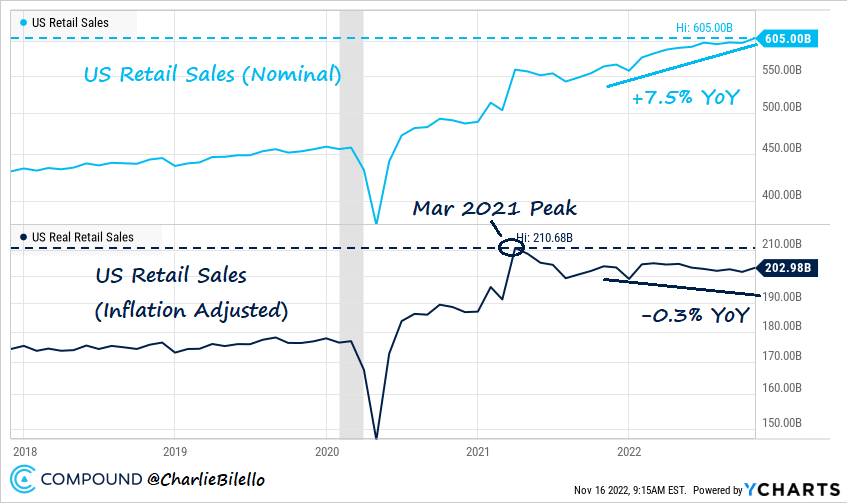

What To Watch Today
Economy
- 8:30 a.m. ET: Housing Starts, October (1.411 million expected, 1.439 prior)
- 8:30 a.m. ET: Building Permits, October (1.515 million expected, 1.564 million prior)
- 8:30 a.m. ET: Housing Starts, month-over-month, October (-2.0% expected, -8.1% prior)
- 8:30 a.m. ET: Building Permits, month-over-month, October (-3.2% expected, -1.4% prior)
- 8:30 a.m. ET: Philadelphia Fed Business Outlook Index, November (-6.0 expected, -8.7 prior)
- 8:30 a.m. ET: Initial Jobless Claims, week ended Nov. 12 (228,000 expected, 225,000 prior)
- 8:30 a.m. ET: Continuing Claims, week ended Nov. 5 (1.510 prior)
- 11:00 a.m. ET: Kansas City Fed Manufacturing Activity, November (-8 expected, -7 prior)
Earnings
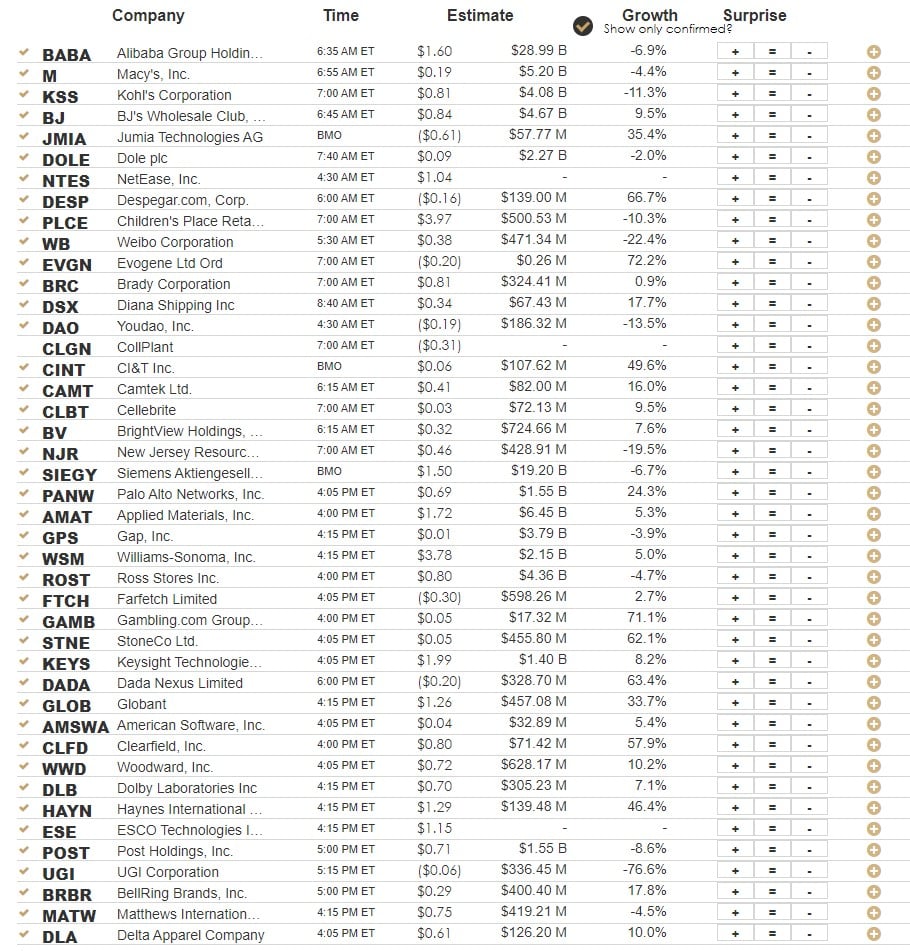
Market Trading Update
After strong retail sales data this morning, the market traded lower on profit-taking after the recent spurt higher. The strong retail numbers suggest the economy is doing just fine and would not halt the Fed from hiking rates further. Also, comments from the Fed suggesting the same took some of the “wind out of the sails.” Given that a big chunk of the retail sales data for October came from Halloween spending and California stimulus payments, we will likely get some clawback in the November report.
For now, the market tested the upper rising trend line, got overbought, and is now correcting to some degree. Initial support is the 100-dma. The 20-dma has crossed above the 50-dma, which is bullish and will increase support for any short-term correction. Take profits and rebalance risks. We will likely get another trading opportunity in the next week or two.
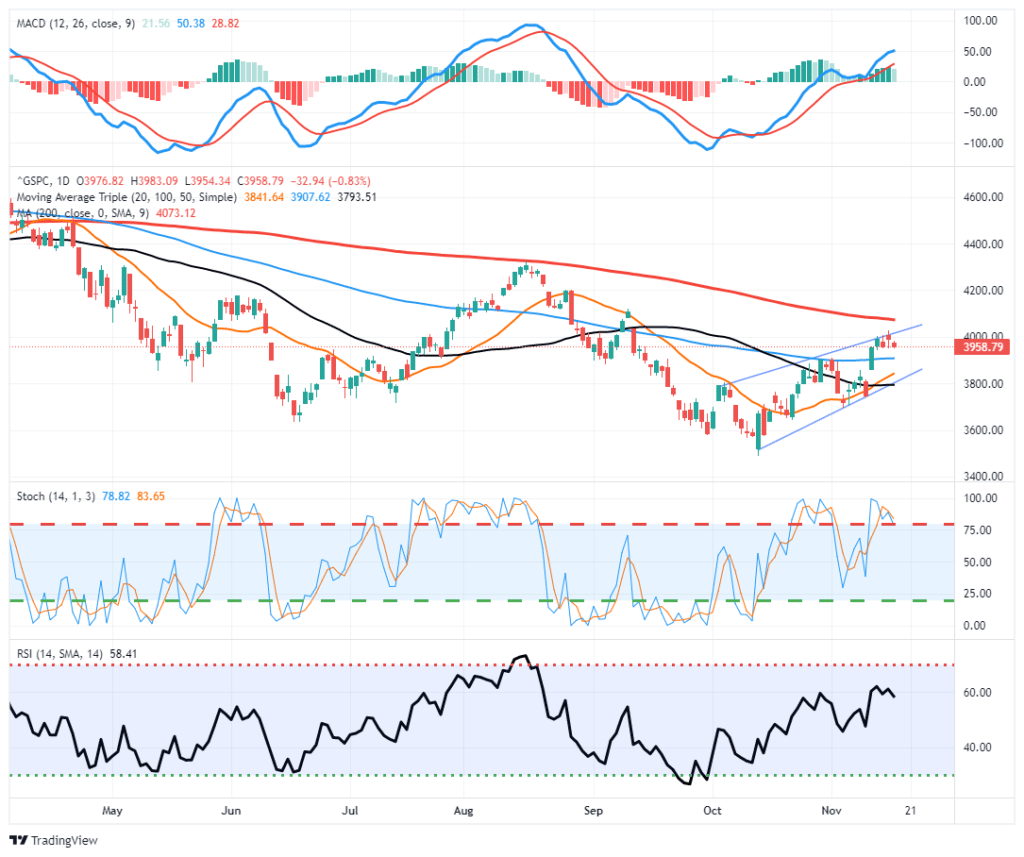
Loading Up On Credit Card Debt
Just as Target, FedEx, and Amazon warn about the coming holiday season, the recent Federal Reserve data on credit card debt offers another signal that consumers are in trouble. Consumers borrow heavily to fuel purchases as their incomes fail to keep up with inflation. Revolving credit, primarily outstanding credit card balances, increased at an annual rate of 8.7% to a record $1.162 trillion in September.
Confronted with negative real wage growth and dwindling savings, many consumers resort to credit to keep up their consumption. The graph below from Fabian Wintersberger shows a robust correlation between real wages and credit card debt. Given credit card limits and the likelihood of increased unemployment, real retail sales will likely remain under pressure. The scenario is likely fueling worries of Target, FedEx, Amazon, and many other retailers.
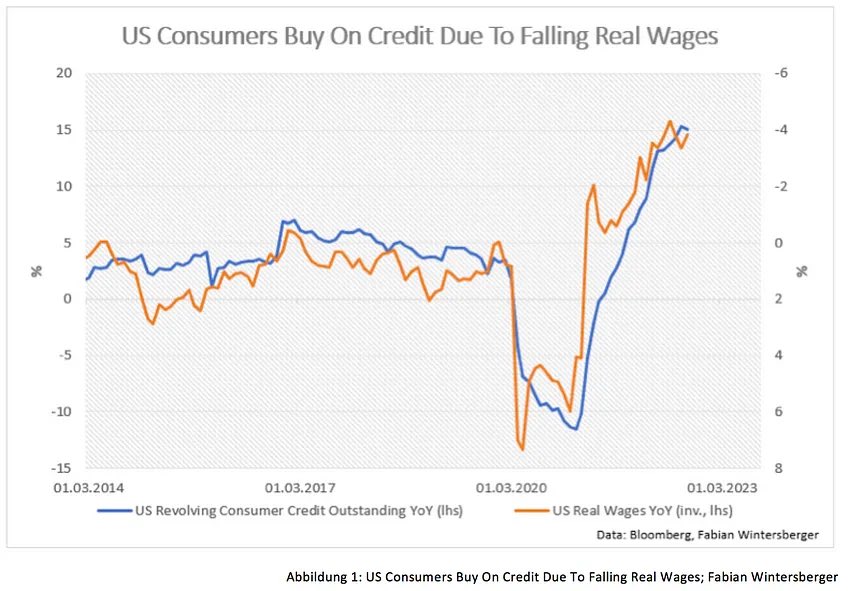
Just How Much Credit Card Debt Are We Talking About?
“American household debt has hit a new high, with the collective tab rising $351bn in the latest quarter, taking the total owed by households to more than $16.5 trillion. There are not many comparisons to give that number context, but it is roughly 5x the size of the UK economy, or just shy of 7x what Apple is worth.
All told, household credit card debt grew 15% year-on-year, the largest annual jump for more than 20 years. A group of Federal Reserve researchers, hardly known for their sensationalist exaggeration, said the increase ‘towers over the last 18 years of data.’
With over 500 million accounts open in the US, credit cards are a staple of consumer spending — more than 190 million Americans have at least one account, and 13% reported having five or more cards.” – Chartr
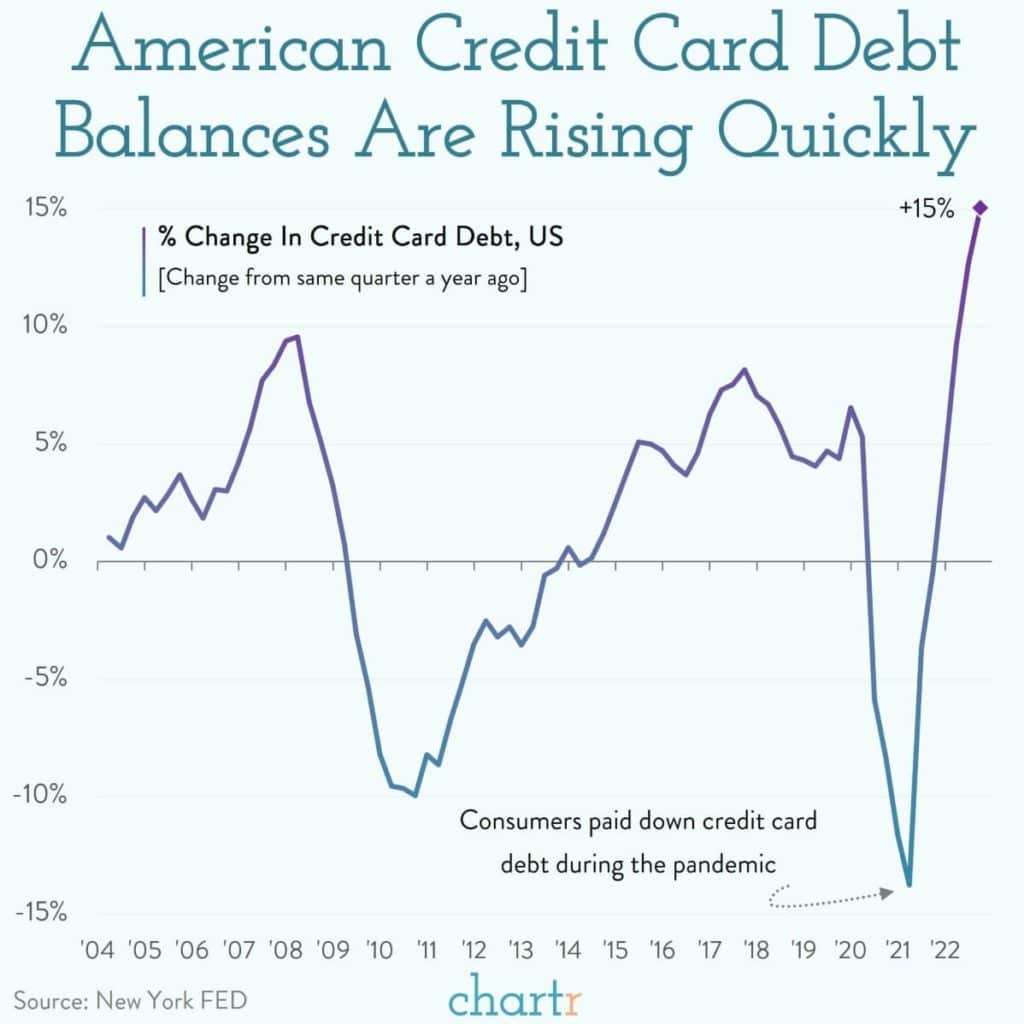
Short Covering Rally Ahead In Bonds?
The current speculative trader net short positions in 2yr UST futures are at a record level. Looking at the graph below, we see the prior record short position in November of 2018 preceded a nearly 3% decline in two-year yields. Can that happen again?
To help understand the bet the short traders are making and answer our question, we review what speculative traders think will happen. The price of Fed Funds futures denotes where traders believe the Fed Funds rate will be in each future month. The two-year yield tends to track Fed Funds futures closely. Therefore, given the strong correlation, we can take the average of the next 24 monthly Fed Fund futures contracts and compare it to the 2-year yield. The second graph below shows the 24 individual Fed Fund contracts comprising the lifetime of a current two-year note. The average of the 24 contracts is 4.33% on top of the 4.34% two-year note yield.
Short sellers are betting that Fed Funds futures are underestimating the Fed’s resolve. They must believe that Fed Funds will peak above 4.91 and or not decline as much as futures imply.
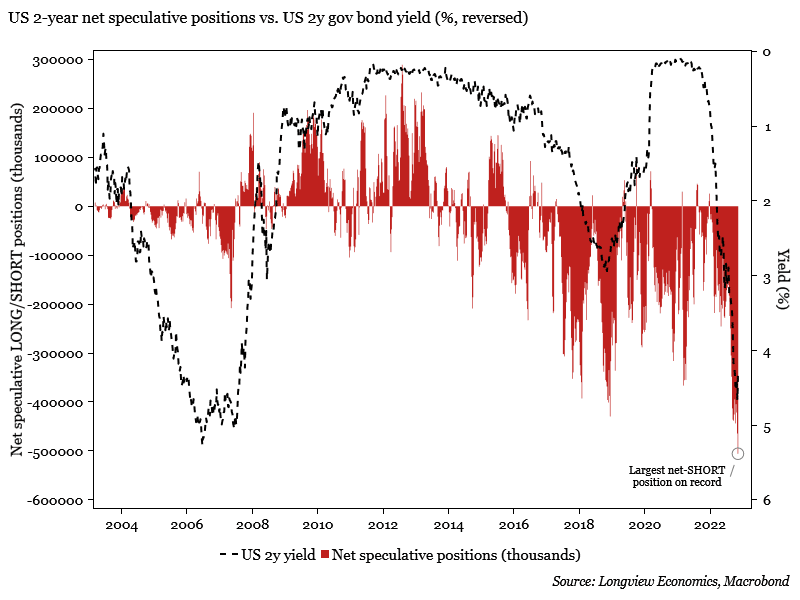
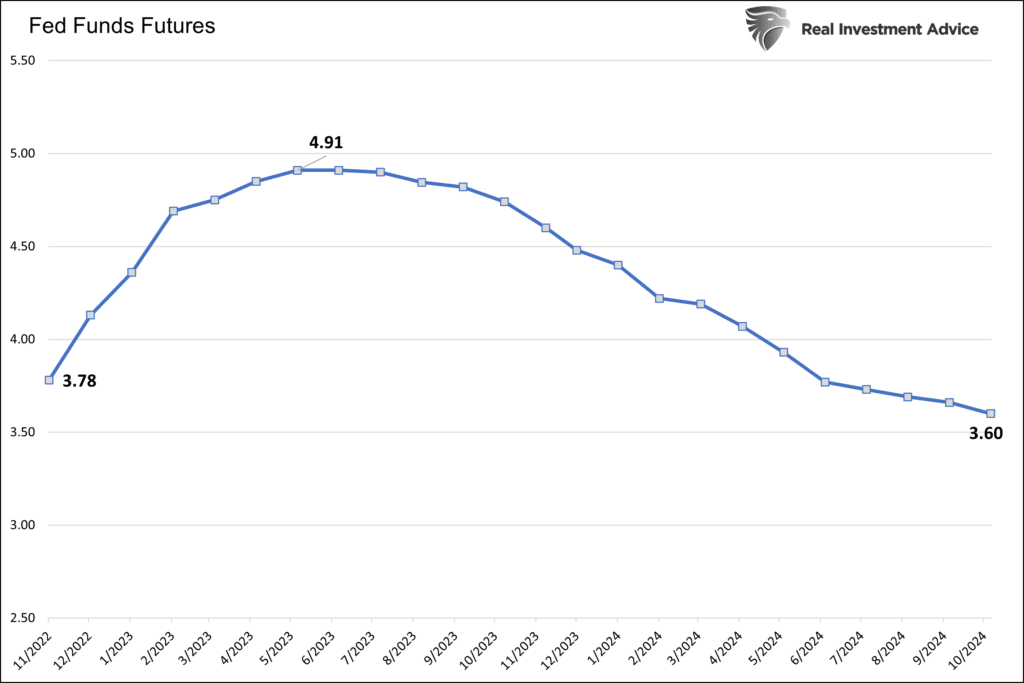
Fed President Esther George Targets Labor
“I’m looking at a labor market that is so tight, I don’t know how you continue to bring this level of inflation down without having some real slowing, and maybe we even have contraction in the economy to get there.”
The following quote from a WSJ article offers insight into the resolve of many Fed members to bring down inflation. Not surprisingly, they appear somewhat bewildered that their aggressive actions have had minimal economic and labor market impact. George and other members appear resigned to the fact that a recession is inevitable. She further states:
“I have not in my 40 years with the Fed seen a time of this kind of tightening that you didn’t get some painful outcomes.”
Therefore, it appears labor is in the Fed’s crosshairs.
“we’re really looking at labor as the driver here.”
Tweet of the Day
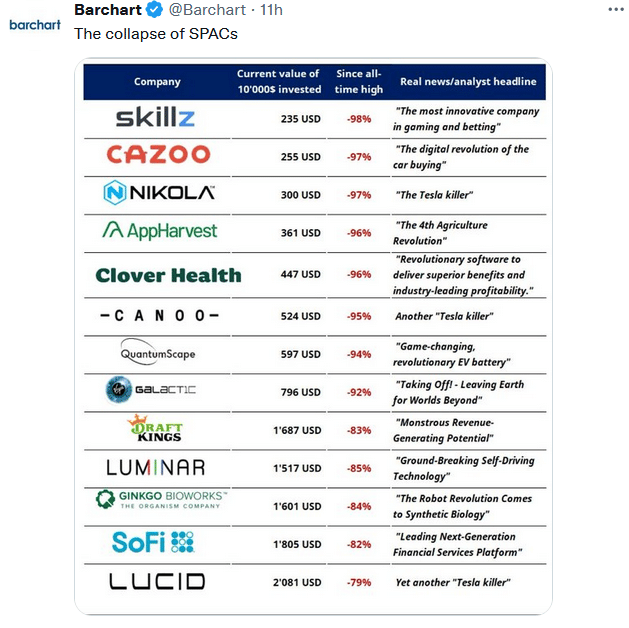
Please subscribe to the daily commentary to receive these updates every morning before the opening bell.
If you found this blog useful, please send it to someone else, share it on social media, or contact us to set up a meeting.


